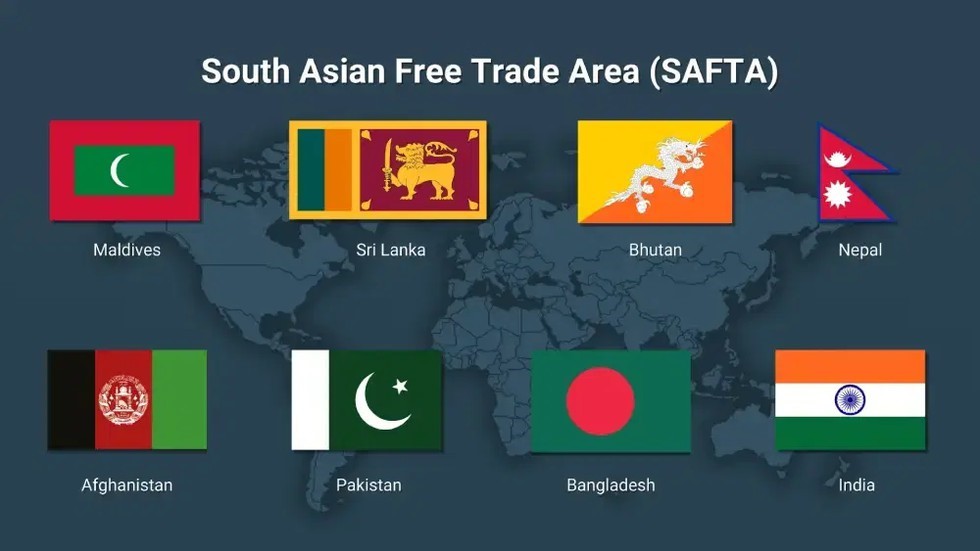
SAFTA

13.02.2025
SAFTA
|
For Prelims: About SAFTA |
Why in the news?
Recently, the Solvent Extractors’ Association of India (SEA) has requested the Government to regulate the inflow of edible oils from Nepal and other SAARC countries due to misuse of SAFTA norms.
About SAFTA:
- It is the free trade arrangement of the South Asian Association for Regional Cooperation (SAARC).
- The agreement came into force in 2006, succeeding the 1993 SAARC Preferential Trading Arrangement.
- SAFTA signatory countries: Afghanistan, Bangladesh, Bhutan, India, Maldives, Nepal, Pakistan and Sri Lanka.
- SAFTA recognizes the need for special and differential treatment for LDCs in its preamble.
- The objectives of this Agreement are to promote and enhance mutual trade and economic cooperation among Contracting States by, inter-alia:
- Eliminating barriers to trade in, and facilitating the cross-border movement of goods between the territories of the Contracting States;
- Promoting conditions of fair competition in the free trade area, and ensuring equitable benefits to all Contracting States, taking into account their respective levels and pattern of economic development;
- Creating effective mechanism for the implementation and application of this Agreement, for its joint administration and for the resolution of disputes; and
- Establishing a framework for further regional cooperation to expand and enhance the mutual benefits of this Agreement.
Source: The Hindu businessline
Consider the following statements regarding the South Asian Free Trade Agreement:
Statement-I: It is the free trade arrangement of the South Asian Association for Regional Cooperation (SAARC).
Statement-II: Afghanistan is not a member of this initiative.
Which one of the following is correct in respect of the above statements?
A.Both Statement-I and Statement-II are correct, and Statement-II is the correct explanation for Statement-I.
B.Both Statement-I and Statement-II are correct, and Statement-II is not the correct explanation for Statement-I.
C.Statement-I is correct, but Statement-II is incorrect.
D.Statement-I is incorrect, but Statement-II is correct.
Answer C